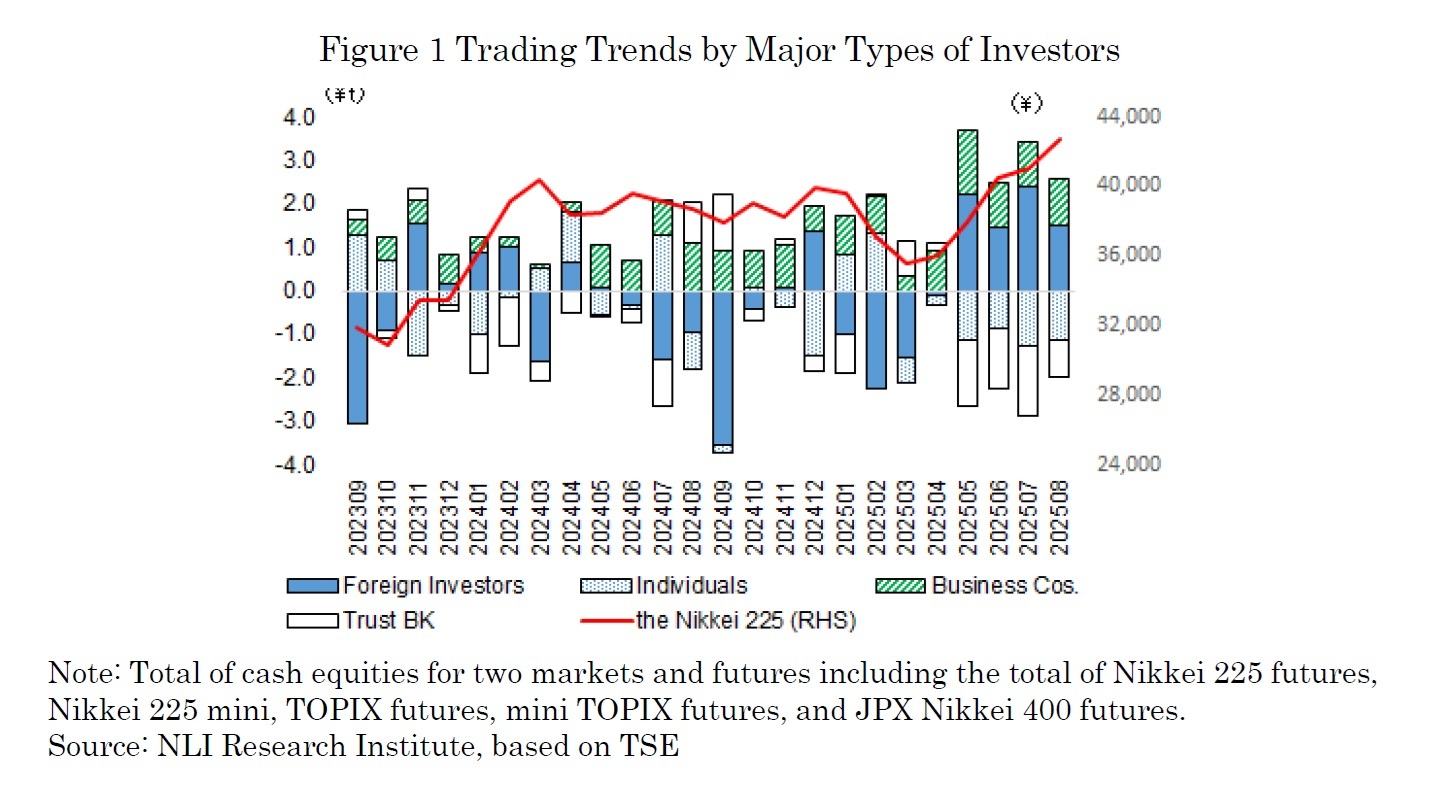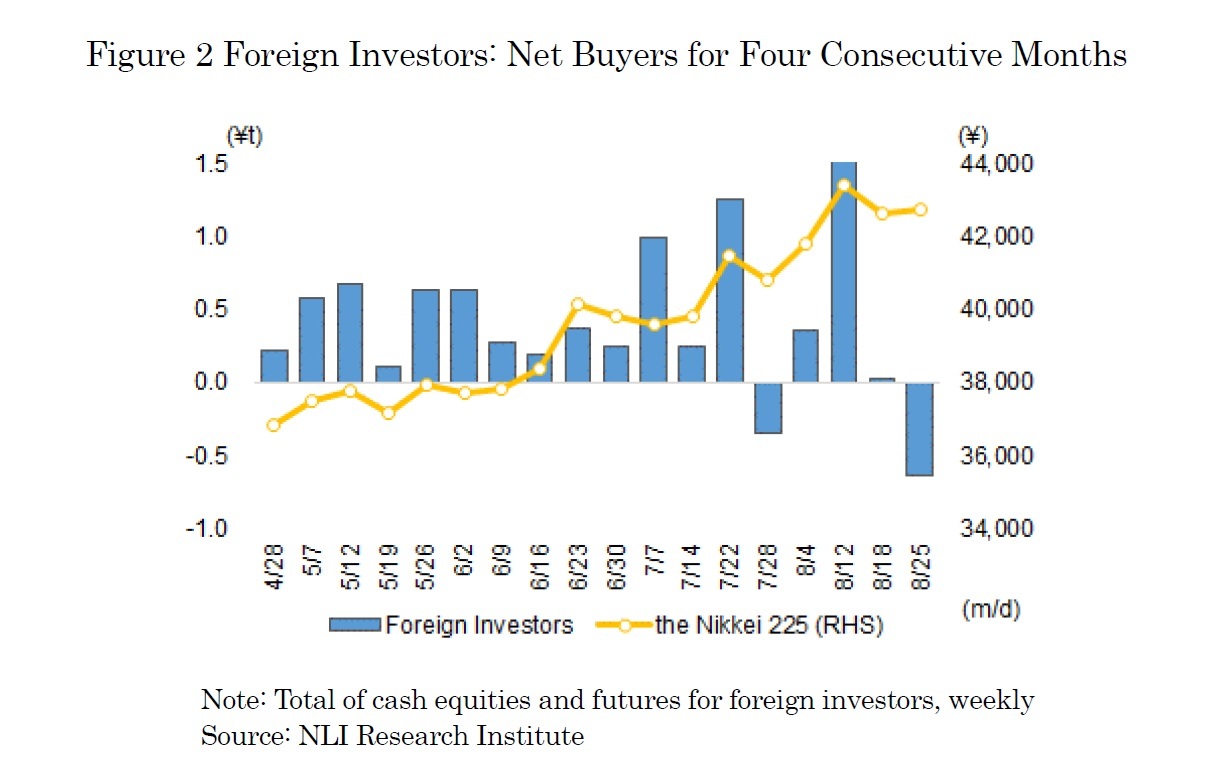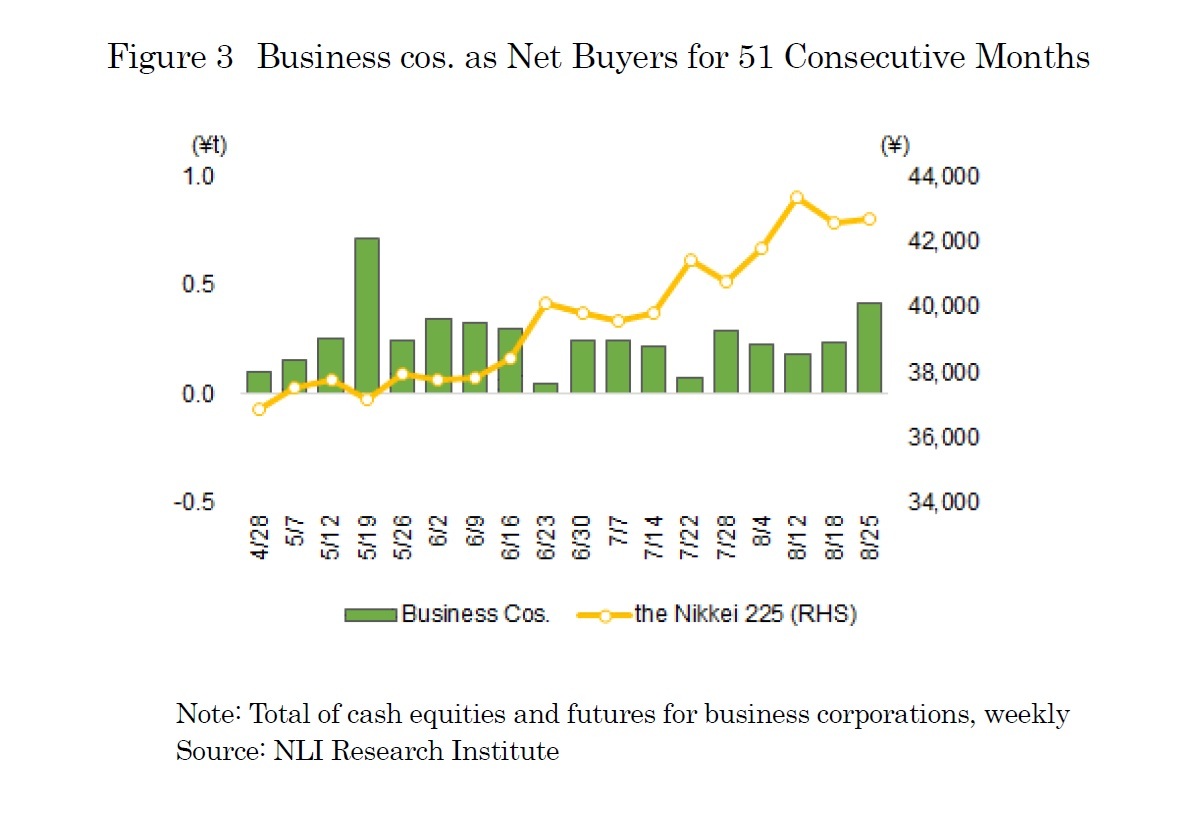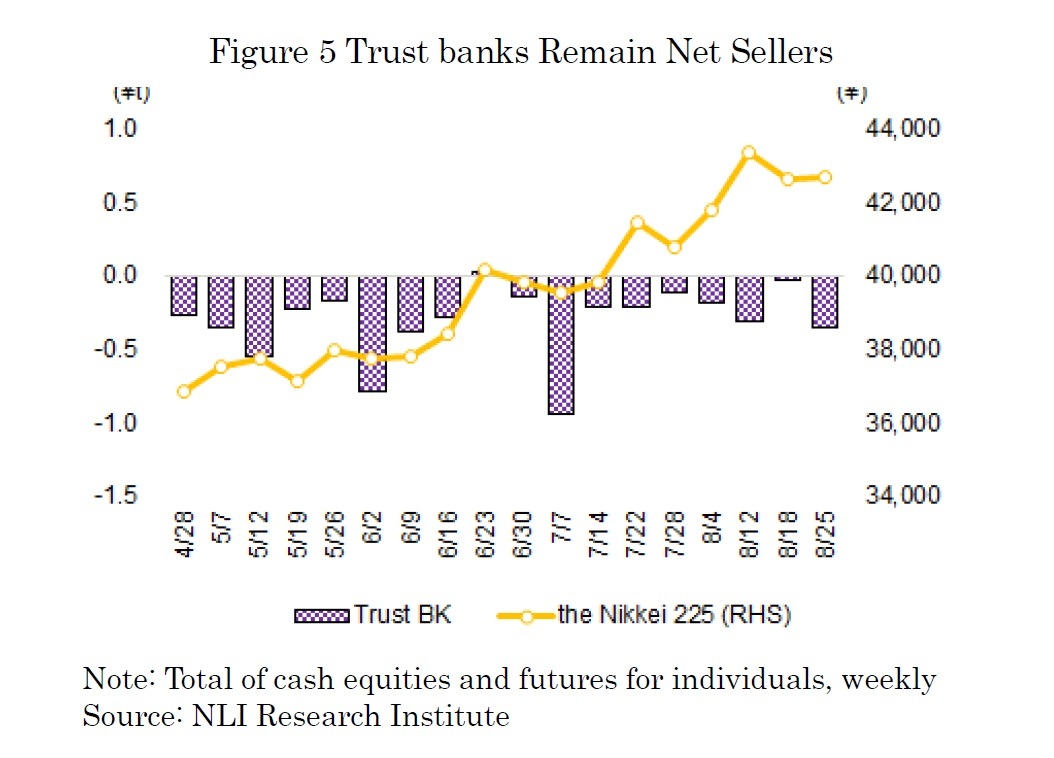- NLI Research Institute >
- Asset management・Asset building >
- Investors Trading Trends in Japanese Stock Market:An Analysis for August 2025
Column
08/09/2025
Investors Trading Trends in Japanese Stock Market:An Analysis for August 2025
Financial Research Department Chizuru Morishita
Font size
- S
- M
- L
In August 2025, the Nikkei 225 rose for the fifth consecutive month, reaching a new all-time high. In early August, the index temporarily declined due to weakness in semiconductor stocks and soft U.S. employment data. However, rising expectations of U.S. rate cuts and a weaker yen provided support, and the Nikkei held above the 40,000 level. In mid-August, stronger-than-expected earnings from major domestic companies and the release of positive April–June GDP flash estimates lifted the index. On the 13th, it climbed above 43,000 for the first time, and on the 19th, it rose as high as 43,714. In late August, while Fed Chair Powell’s remarks at the Jackson Hole symposium fueled expectations for U.S. rate cuts, concerns over the Fed’s independence and comments by President Trump acted as headwinds, resulting in a mixed market tone. The Nikkei maintained high levels and ended the month at 42,718. By investor type, foreign investors and business corporations were net buyers, while individuals and trust banks were net sellers (as shown in Figure 1).
The trading by type of investors in August 2025 (August 4 to 29) shows that foreign investors were the largest net buyers, with a total net purchase of 1.517 trillion yen in cash equities and futures (as shown in Figure 2). This marked their fourth consecutive month of net buying since May 2025. On a weekly basis, they recorded especially large net buying of 1.759 trillion yen in the second week (August 12 to 15), when the Nikkei surpassed the 43,000 level for the first time. This was likely supported by growing expectations for U.S. rate cuts and easing concerns over the impact of tariffs on corporate earnings following strong results from major domestic companies.
On the other hand, individuals were the largest net sellers in August, with a total net sale of 1.133 trillion yen in cash equities and futures (as shown in Figure 4). They have been net sellers for six consecutive months since March 2025. On a weekly basis, they sold in the first and second weeks as the Nikkei rose to record highs, but shifted to net buying in the third and fourth weeks when the market turned more range-bound.
Trust banks were also net sellers in August, with a total net sale of 862.6 billion yen in cash equities and futures (as shown in Figure 5). This marked their fourth consecutive month of net selling since May 2025. On a weekly basis, they consistently recorded net sales from the first to the fourth week of August.
This report includes data from various sources and NLI Research Institute does not guarantee the accuracy and reliability. In addition, this report is intended only for providing information, and the opinions and forecasts are not intended to make or break any contracts.

03-3512-1855
レポート紹介
-
研究領域
-
経済
-
金融・為替
-
資産運用・資産形成
-
年金
-
社会保障制度
-
保険
-
不動産
-
経営・ビジネス
-
暮らし
-
ジェロントロジー(高齢社会総合研究)
-
医療・介護・健康・ヘルスケア
-
政策提言
-
-
注目テーマ・キーワード
-
統計・指標・重要イベント
-
媒体
- アクセスランキング






















